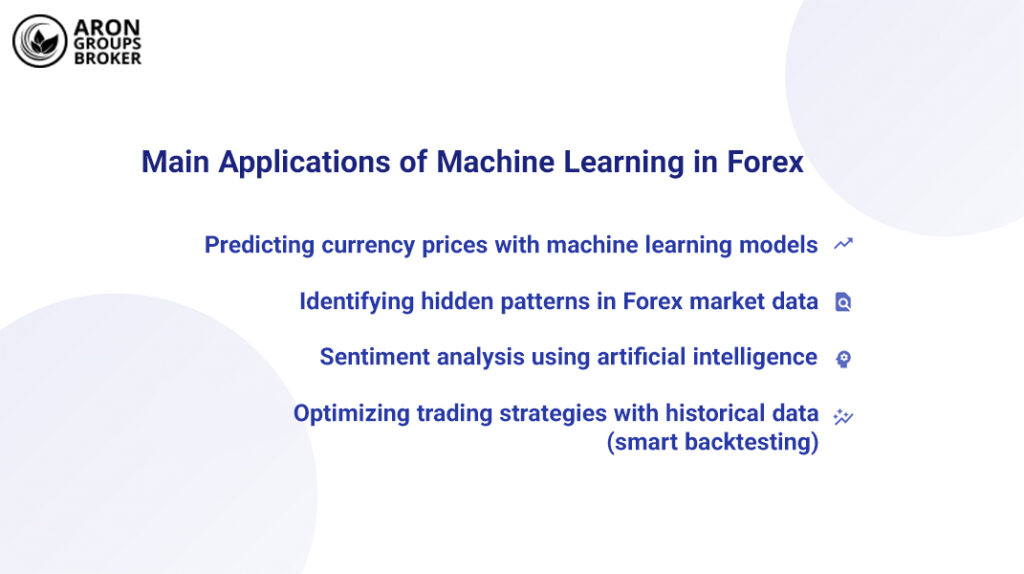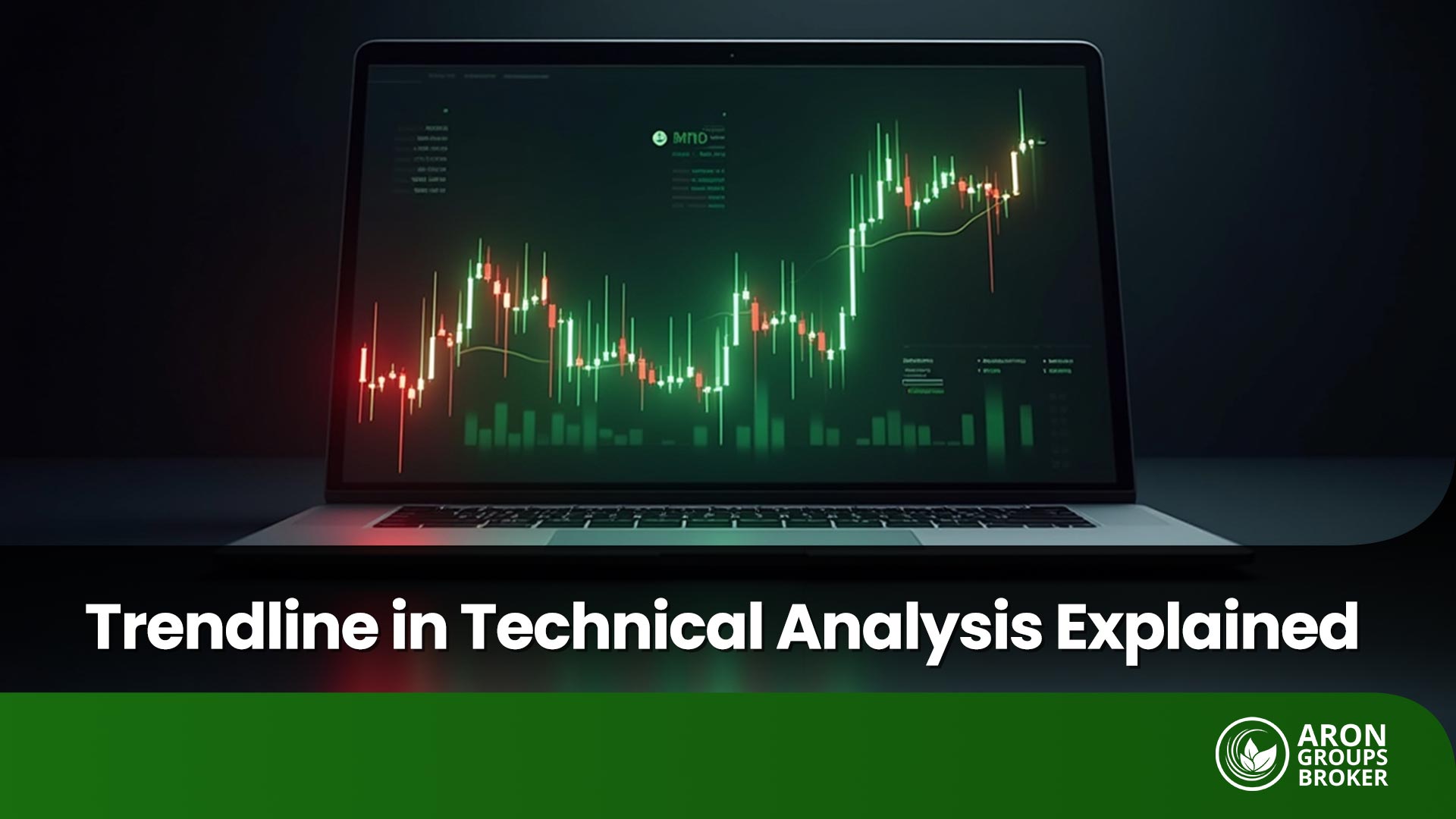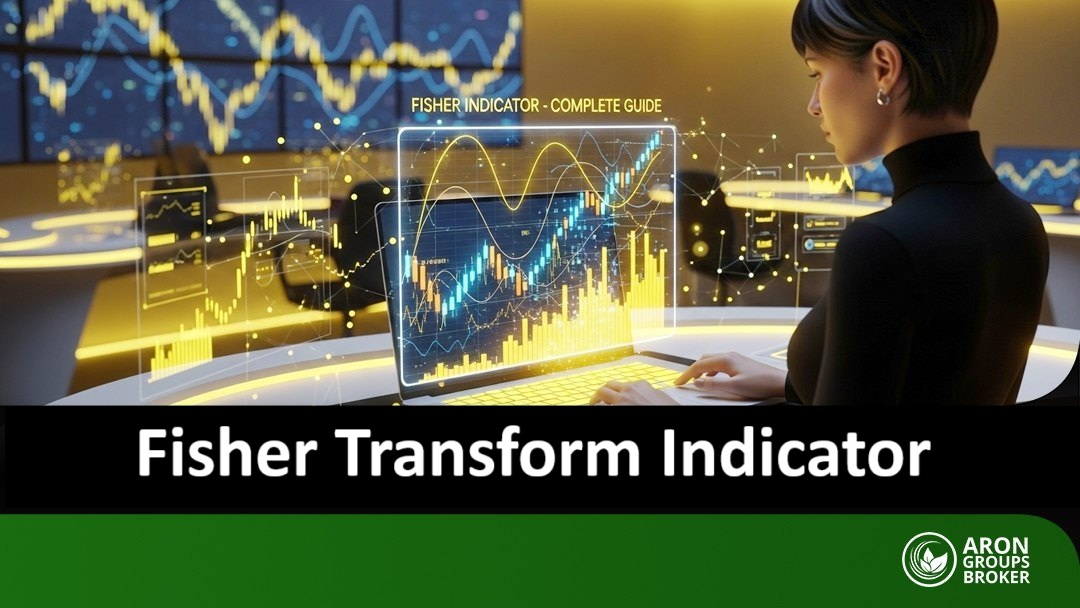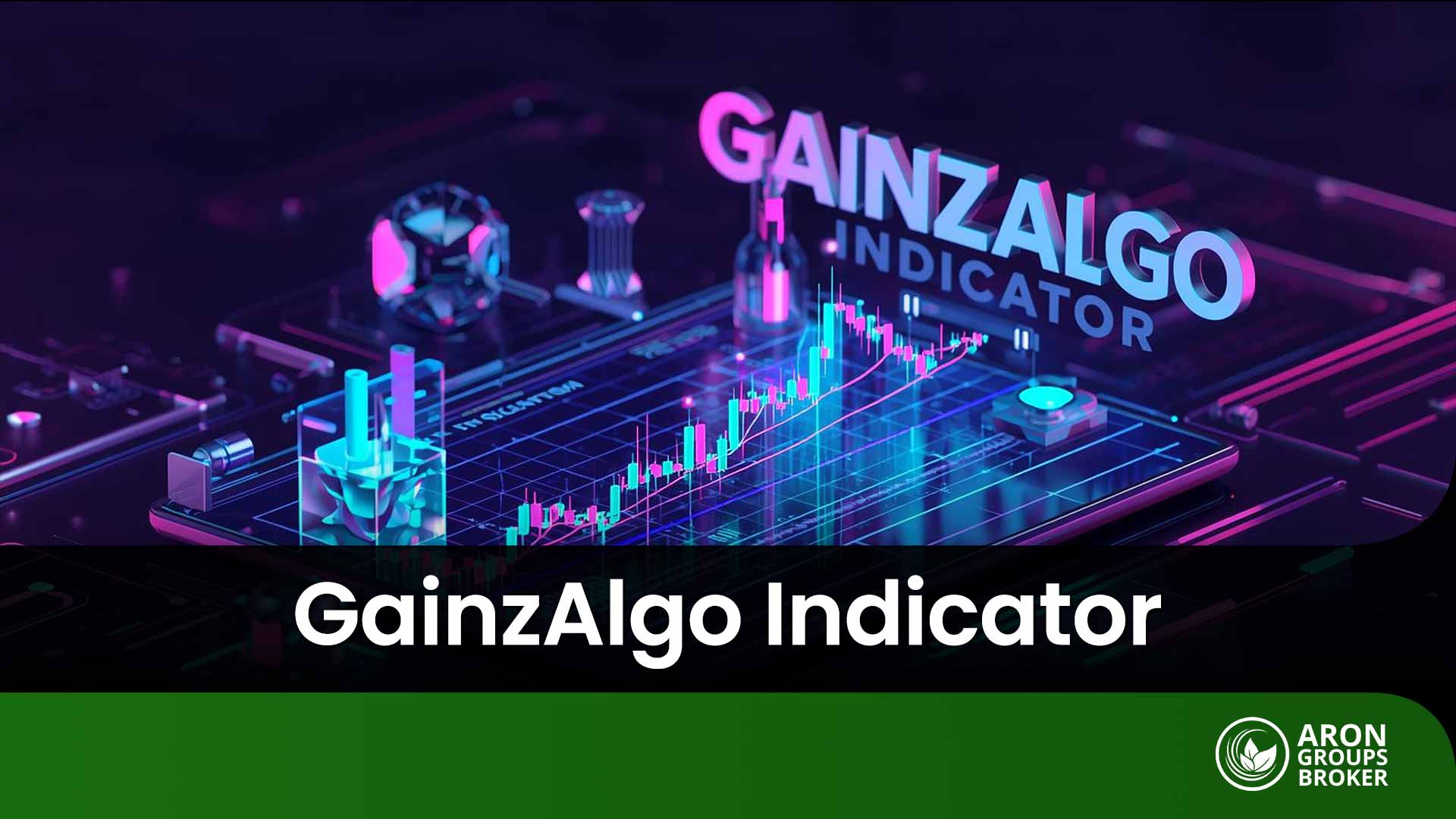As the world’s largest financial market, with a daily trading volume of $6.6 trillion, the Forex market is constantly evolving. Amidst this landscape, Machine Learning (ML) has emerged as a primary driver of transformation, fundamentally reshaping the face of currency trading.
Statistics indicate that only 2% of retail traders successfully predict currency movements, making Forex one of the most challenging financial environments. In this context, Machine Learning is changing the equation by providing advanced analytical tools that bridge the gap between retail capabilities and institutional precision.

- Machine Learning empowers traders to make faster, data-driven decisions while minimizing emotional bias.
- The efficacy of this technology hinges on data quality, appropriate model selection, and adaptability to shifting market conditions.
- Synergizing human analysis (Technical Analysis, Price Action) with intelligent tools creates a formidable trading strategy.
- One must remain cognizant of the risks, complexities, and implementation costs; Machine Learning is a tool, not a miracle "silver bullet."
What is Machine Learning and How Does it Relate to Forex?
According to an article on ibm.com, Machine Learning is a subset of Artificial Intelligence (AI) that refers to a system capable of learning from data. It can improve performance, identify patterns, and generate predictions without explicit programming.
The Forex market, characterized by its immense transaction volume and widespread access to pricing data, presents an ideal environment for deploying Machine Learning. ML algorithms can analyze this data to identify trends and latent patterns, forecasting probable price movements. Consequently, Machine Learning helps traders make faster, more accurate decisions, effectively mitigating the impact of human sentiment on trading outcomes.
Why is Forex the Ideal Environment for Machine Learning?
Due to specific structural and operational characteristics, Forex serves as a perfect testbed for ML models and the development of Algorithmic Trading.
The key features of the Forex environment include:
Vast and Continuous Data Streams
The Forex market is highly liquid and massive (turning over trillions of dollars daily). This results in the generation of enormous datasets regarding price, volume, and time across 24 hours a day (excluding weekends). This abundance of data provides the necessary “fuel” required to train and refine Machine Learning models.
Diversity of Analytical Data Sources
ML systems can analyze and synthesize input data far beyond simple price and volume metrics, including:
- Macroeconomic Data: Such as Interest Rates, Unemployment Rates, and GDP figures.
- News and Event Data: To assess the immediate impact of headlines on market volatility.
- Sentiment Analysis: Extracting and gauging general market sentiment from social media feeds or news platforms.
This diversity allows ML models to gain a holistic view of market dynamics.
High Complexity and Volatility
The Forex market is heavily influenced by economic, political, and geopolitical factors, making it a non-linear and highly complex ecosystem. Machine Learning models excel at identifying hidden patterns and complex correlations among numerous variables that human analysts may struggle to detect. Furthermore, the market’s inherent volatility creates frequent profit opportunities that automated systems can exploit with superior speed.
The Need for Speed and 24-Hour Operations
The nature of the Forex market, which is active 24 hours a day, demands rapid reactions to fluctuations (often requiring High-Frequency Trading (HFT) capabilities). This necessitates the use of intelligent, automated systems based on ML that can operate continuously without fatigue.
Distinguishing Machine Learning from Artificial Intelligence in Trading
While Artificial Intelligence (AI) and Machine Learning (ML) are frequently used interchangeably in the financial trading sphere, conceptually, Machine Learning is a distinct subset of the broader Artificial Intelligence framework.
Artificial Intelligence (AI): The Overarching Framework
AI acts as a broad “umbrella” term designed to engineer systems capable of executing tasks that typically necessitate human cognition. These tasks encompass decision-making, problem-solving, linguistic comprehension, and environmental interaction.
In Trading:
AI can encompass any system that acts intelligently. This ranges from simple Rule-Based Systems and expert systems to algorithms utilizing fuzzy logic to execute decisions based on pre-defined parameters. Crucially, these systems do not necessarily need to “learn” from data to function; they simply follow complex instructions.
Machine Learning (ML): Focusing on Data-Driven Learning
Machine Learning is a specialized discipline within AI focused exclusively on a system’s ability to learn and enhance its performance through data ingestion, without being explicitly programmed for every scenario.
In Trading:
ML refers to specific algorithms (such as Neural Networks or Decision Trees) that ingest vast quantities of financial and economic data (historical prices, volume, news flow). They analyze this data to detect latent patterns and generate statistical predictions or trading signals for future market movements.
| Feature | Artificial Intelligence (AI) | Machine Learning (ML) |
|---|---|---|
| Definition | Broad umbrella concept for simulating human intelligence. | A subset of AI; focused on learning from data. |
| Core Goal | Decision-making and problem-solving (emulating human logic). | Pattern recognition and prediction based on data. |
| Mechanism | Can be fixed and Rule-Based. | Must be Data-Driven and adaptive. |
| Trading Example | A simple bot programmed to sell solely when RSI exceeds 70. | A system that analyzes historical data to discover the optimal RSI settings dynamically. |

Every Machine Learning system is a form of AI, but not every AI system necessarily utilizes Machine Learning.
Core Applications of Machine Learning in Forex
As a pivotal technology, Machine Learning (ML) provides advanced analytical and operational capabilities to traders and financial institutions within the Forex market.

Currency Price Prediction with Machine Learning Models
One of the most critical applications of ML is utilizing advanced models to forecast future currency price movements.- Methodology: Models such as Artificial Neural Networks (ANNs) and Long Short-Term Memory (LSTM) networks learn recurrent and non-linear patterns by analyzing vast quantities of historical price data, volume, and technical indicators.
- Practical Output: These models can generate actionable predictions regarding future trends or the probability of specific price movements, forming the basis for trading decisions.
Identifying Hidden Patterns in Forex Market Data
Machine Learning possesses the unique capability to uncover complex relationships and structures within market data that are often imperceptible through traditional Technical Analysis or Fundamental Analysis.- Undiscovered Insights: Algorithms can detect specific combinations of factors (e.g., the simultaneous occurrence of a particular economic indicator with a volume pattern) that precede significant price swings.
- Advantage: This enables traders to identify unexpected trading opportunities earlier and mitigate risks stemming from structural market shifts.
Sentiment Analysis with Artificial Intelligence
Market sentiment analysis involves evaluating the overall mood and disposition of the market toward a specific currency or economy. Systems powered by Machine Learning (ML) and Natural Language Processing (NLP) play a crucial role in this domain.- Unstructured Data Analysis: AI can rapidly process news sources, financial reports, central bank statements, and social media posts.
- Signal Generation: The system categorizes these texts, estimates their potential emotional impact (positive, negative, or neutral) on relevant trading instruments, and generates real-time trading signals.
Optimizing Trading Strategies with Historical Data (Smart Backtesting)
Machine Learning transforms the process of strategy testing (backtesting) from a static procedure into a dynamic and intelligent system.- Parameter Adjustment: Instead of manually testing fixed parameters, ML models can automatically discover the optimal combination of parameters (e.g., the best Stop Loss or Take Profit levels) for a given trading strategy, based on past performance across diverse market conditions.
- Continuous Improvement: This approach helps traders identify weaknesses in their strategies and continuously adapt and optimize them for changing market conditions, ultimately eliminating human emotion and increasing the efficiency of the trading system.
Executing Algorithmic Trading with Machine Learning
Algorithmic Trading, often referred to as automated trading, entails the computerized execution of buy and sell orders based on a rigorous set of pre-defined rules.
When Machine Learning is integrated into this workflow, these systems achieve a tier of intelligence and self-adaptation that empowers them to dynamically learn and optimize trading rules directly from incoming data, rather than relying solely on static instructions.
Example Scenario:
Consider a traditional trader utilizing Bollinger Bands for decision-making. They typically employ standard settings (e.g., a 20-day Simple Moving Average with 2 Standard Deviations).
- The Traditional Method: Parameters are static and rely on historical heuristics or general market conventions.
- The Machine Learning (ML) Approach:
- Objective: We train the ML model to identify the optimal Bollinger Band parameters (such as the lookback period for the Moving Average and the Standard Deviation multiplier) that have yielded the highest profitability for the EUR/USD pair over the last decade.
- ML Functionality: The model might discover that during intense trending phases, a 35-day Moving Average with 1.8 Standard Deviations outperforms the standard settings. Crucially, it dynamically adjusts these parameters over time in response to shifting market volatility.
Outcome: The trading system executes trades automatically using optimized configurations rather than static ones. This results in enhanced execution speed, precision, and the complete removal of human cognitive bias from the decision-making process.
Challenges and Limitations of Machine Learning in Forex
Despite the substantial potential of Machine Learning in the Forex market, the deployment of and reliance on these systems come with a specific set of challenges and constraints that are essential for traders to acknowledge.
- Data Quality and Noise:
Machine Learning (ML) models require clean, complete, and accurate data. In the Forex market, data often contains noise, measurement errors, and temporal discrepancies. Poor-quality data leads to erroneous predictions and, consequently, financial losses. - The Problem of Non-Stationarity:
Financial markets are in a state of constant flux. The structure and relationships between economic factors shift continuously. A model trained on data from a specific period may quickly become ineffective under new market conditions, necessitating constant model updates and retraining. - Risk of Overfitting:
There is a risk that the model becomes overly dependent on historical data and the noise within it, resulting in poor performance in the live, real-world market environment where patterns differ slightly. - Technical Complexity and Implementation Costs:
Building, training, and maintaining advanced Machine Learning models (such as Neural Networks) requires deep technical expertise in data science, programming, and financial engineering. The initial hardware and software costs for developing the necessary infrastructure are also substantial. - Need for Human Judgment:
Machine Learning (ML) operates solely based on statistical patterns and existing data. These models lack human intuition or emotional intelligence, which are sometimes vital for reacting to major unexpected events (such as geopolitical crises) that have no precedent in historical data. - Risk of Over-Reliance:
Traders may place excessive trust in a model due to strong backtesting performance, leaving the models without adequate monitoring systems or human intervention during critical conditions. - Amplification of Market Volatility:
The widespread and simultaneous use of intelligent algorithms can exacerbate market volatility during stressful conditions due to their coordinated and rapid reactions, potentially leading to sudden instability. This has drawn the attention of regulatory bodies to establish new regulations.
The Future of Trading with AI and Machine Learning in the Forex Market
The future of Forex will be profoundly influenced by advancements in Artificial Intelligence and Machine Learning. Rather than eliminating human traders, these technologies will transform and augment their roles.

Emerging Trends in Automated Trading and Deep Learning
The automated trading sector is moving toward greater complexity and intelligence with the emergence of advanced Machine Learning (ML) techniques:
- Deep Learning: The use of neural networks with multiple layers enables models to better comprehend highly complex and non-linear data, identifying deeper and more subtle patterns that remain invisible to traditional methods.
- Reinforcement Learning: Instead of merely predicting, these models use trial-and-error in a simulated environment to learn the optimal sequence of trading actions to maximize profit over time, rather than just instantaneously.
- Analysis of Unstructured Data: Integrating Machine Learning (ML) with Natural Language Processing (NLP) enables immediate, precise analysis of news, economic reports, and even social media sentiment, making trading decisions fully data-driven.
Integrating AI with Traditional Analysis and Price Action
The future of trading likely lies in a hybrid model, where Artificial Intelligence acts not as a replacement, but as an enhancer of traditional analysis:
- Signal Confirmation: Machine Learning (ML) can validate or reject signals generated by traditional methods such as Price Action, Support and Resistance levels, or Candlestick patterns.
- Dynamic Optimization: AI can assist the human trader in optimizing parameters of traditional technical indicators (such as Moving Averages or Bollinger Bands) based on real-time and shifting market conditions.
- More Informed Decision Making: Traders will gain a significant competitive advantage by combining qualitative human insight regarding unprecedented events with the analytical precision and speed of ML.
Will Robots replace Human Traders?
The answer to this question is no. It does not appear that human traders will be entirely eliminated, but their roles will evolve:
- Execution Automation: A major portion of trade execution, rapid analysis, and pattern scanning will be fully delegated to bots (already, a large segment of trading volume is executed by automated systems).
- Focus on Strategy and Oversight: The human role will shift from executor to supervisor, strategist, and ultimate risk manager. In the future, humans will be responsible for designing ML models, setting risk parameters, interpreting major black swan events (such as economic and political crises), and making decisions in scenarios where models have not been trained.

Success in the future belongs to traders who can effectively collaborate with AI, not those attempting to compete against it.
Conclusion
Machine Learning (ML) has significantly increased trading efficiency by transforming the Forex market into a data-driven and automated ecosystem. According to an article by Nurp, these systems can analyze up to 400,000 data points per second, offering higher accuracy (around 75% in predictions) and unbiased, 24-hour trade execution compared to traditional methods.
Despite the advantages, ML faces challenges such as the need for high-quality data, the risk of overfitting, and the lack of human judgment. Therefore, the future of trading is gravitating toward hybrid models in which AI handles analysis and execution. At the same time, the human trader focuses on strategic risk management and the interpretation of unprecedented events.






























